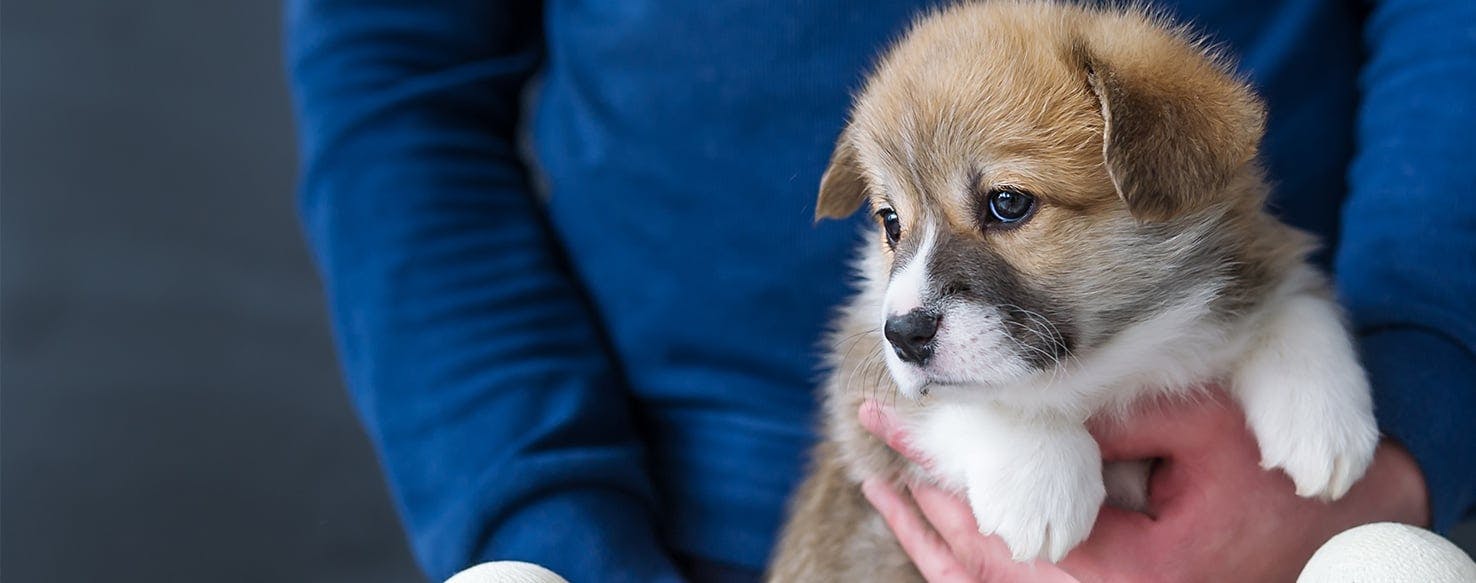- Home
- The Daily Wag!
- Senses
- Can Dogs Sense Strangers?

Dogs have incredible senses. It is through these senses, especially their sense of smell, that they can imprint memories of the people they have met. Dogs have a sense of intuition, almost a sixth sense, and this helps with deciding if you are a friend or a stranger. Your dog is very aware of body language and the pheromones that are sensed as you meet people.
A stranger coming to your house will not be on your dog’s list of people they know. The arrival of a stranger alerts your dog to differences in the way you meet the stranger, how the stranger smells, and sounds.
Dogs can judge if a person arriving at your door is a stranger to your household. Dogs have a ‘social intelligence’ and can use this along with their other senses to decide if the person arriving is unknown to you. Dogs' heightened sense of smell can pick up on strange body odors, the smell of fear or anxiety, and someone coming from a different neighborhood.
Dogs will observe body language and notice tension or apprehension. They will alert you by their body language, too. You may notice your dog’s hackles rise and their tail stands straight or wags slowly in a menacing fashion. Dogs growl as a warning of how they feel in situations when they are not sure if there is a friend or foe visiting.
The way a stranger approaches your dog will either set your dog at ease or continue to make them feel insecure and uneasy around the stranger. Dogs can sense rapid heartbeats and they can read a fearful or apprehensive body language as the stranger arrives. Natural guard dogs, like Rottweillers and German Shepherds, will always be ready to warn of a strange visitor.
Dogs also use what is known as ‘Social Referencing’, meaning that they look to you, their owner, to see your reaction and based on that, they will respond to the visitor. Dogs are one of the few animals that practice ‘social referencing’ and automatically look to their owners for clues and encouragement.
Body Language
Signs that your dog knows someone is a stranger include:
- Back Hair On Edge
- Ears Back
- Stiff Tail
Other Signs
<p>More signs that your dog can tell someone is a stranger are:</p>
- Stiff Body Posture
- Flaring Nostrils
The dog’s wolf ancestors were naturally fearful of strangers in the wild. The arrival of a stranger could mean several things and so strangers were not welcomed into the wolf pack. Strangers were driven away.
There are many amazing stories of dogs saving family members from strangers. Intruders who are usually up to no good have negative body language, and the smell of the unwanted visitor alerts the dog to danger. 'Stranger danger', it is known as.
The need for protection against strangers is even more vital when the dog’s owner is deaf. Nellie, a black Lab - and a hearing service dog, saved the day when an intruder threatened her owner. Nellie received the Heroic Hearing Dog Award for her bravery and for knowing that there was a stranger with bad intentions nearby.
Scientists and animal behaviorists are aware of a dog’s ability to sense and remember different smells. Dogs can imprint a smell with an object and then use their tracking skills to find the object. They would be able to do the same to remember the friendly visitor as opposed to the stranger with potential danger.
Dogs see the world through their incredible sense of smell. They can register happy responses in their brain and this has been shown through an MRI scan that shows the part of the brain called the caudate nucleus. This area lights up when some dogs smell their owner, but the response and brain reaction is not so strong in front of a stranger.
Dogs will naturally want to guard their home and some breeds are more predisposed to guarding than others. A protective dog is an asset to the family and if your dog is suited to guarding, there are ways to train them to be a good guard dog. However, it should be noted that a family pet should be a watchdog and not a fully trained guard dog.
Training for guarding is a more intense form of training and the outcome may not suit a suburban family. Dogs trained to protect their families from strangers need some of these qualities – stable temperament, confidence, assertiveness, sociable but not overly friendly, fight drive, train-ability, and loyalty.
The trainer would start with obedience training and the handler would need to have clear leadership skills. The protection dog needs to know who is boss. Highly trained protection dogs fall under laws that their owners must be aware of. Owning a fully trained protection dog is a responsibility.
It is important to know the difference between a protection dog and a family guard or watchdog. A watchdog alerts you to a stranger in the area with barking or growling. Herding breeds like Border Collies are naturally protective and will not need much training. The larger breeds like the Mastiff breeds are naturally imposing and their body weight and size make them natural guard dogs.
If you decide to train your dog as a guard dog, look for the qualities mentioned earlier and have professional help with the training.
Have questions or concerns about your pet?
Chat with a veterinary professional in the Wag! app 24/7.
Get Vet ChatSafety Tips for When Your Dog Senses a Stranger:
- Be aware, yourself, as this person may be up to no good.
- Keep your dog under control to avoid them attacking the stranger.
- Only answer the door to people you know.
Written by a Rhodesian Ridgeback lover Christina Wither
Veterinary reviewed by:
Published: 06/29/2018, edited: 04/06/2020
More articles by Christina Wither
